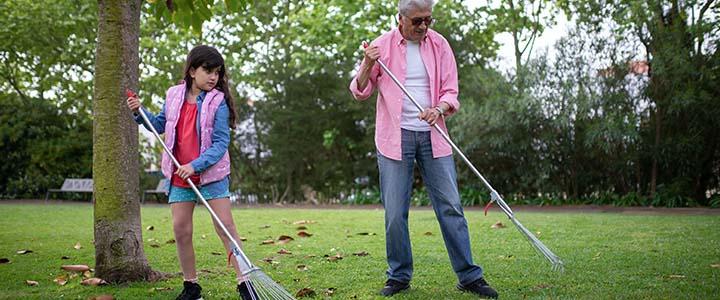
September 2021: Leave Your Leaves and Let Them Feed Your Soil
As the leaves start to fall, our annual raking routines will pick up. While many people have carried on this tradition for years, how many have thought twice about the appropriate place to put their leaves? It’s not as simple as raking them into the street or dumping piles on the side of the road or in the woods. It is actually against the law in New Hampshire to dump your leaves and yard waste in wetlands areas without a permit. Under RSA 482-A:3, to “fill” a wetlands or surface water with natural material that has been “deposited or caused to be deposited by human activity” is prohibited. Disposal of yard waste directly into surface waters, such as streams, rivers, lakes or ponds, contributes an unnatural amount of organic matter that will result in mucky bottom sediment in nearshore swimming areas, and can result in turbid water and lower dissolved oxygen available to aquatic organisms.
In New Hampshire, there is also a ban on disposing of leaf and yard waste at landfills and incinerators, (RSA 149-M:27,III(a)). Therefore, some towns and cities have opted to host town-wide pick-up events. If your town does this, be sure you rake as close to the scheduled collection date as possible to avoid clogging up nearby storm drains or littering the street. Other towns have opted to allow residents to bring their yard waste to the transfer station to be composted and then give that compost back to the residents when it has completed the process. Contact your transfer station or town offices to find out what is offered locally.
There are other ways to manage your leaves, though. Instead of getting rid of them, they can be used around your own property as either compost or as a mulch. Composting is an easy way to create organic fertilizer. Adding either raked or shredded leaves to grass clippings and your kitchen fruit and vegetable wastes to your compost pile will help to create a nutrient-rich soil for next spring’s landscaping.
Leaves can also be used in quicker fashion as mulch, which provides a protective covering for flower beds or gardens. Gardening experts recommend using a lawnmower with a mulching blade and bagging attachment to shred and collect the leaves. Adding these mulched leaves to your flower beds can protect them from severe winter weather and provide moisture and nutrients for your flowers in the spring.
If you want to take a step out of that process, you can also just leave the shredded leaves on your lawn as a natural fertilizer. This method works well as long as the leaves are not too deep or wet when they are mowed. Otherwise, you may end up with large clumps of shredded leaves that can choke out your grass.
Photo by Kampus Production from Pexels




